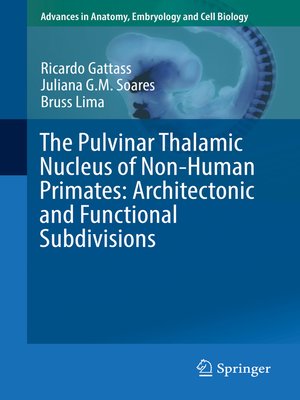The Pulvinar Thalamic Nucleus of Non-Human Primates
ebook ∣ Architectonic and Functional Subdivisions · Advances in Anatomy, Embryology and Cell Biology
By Ricardo Gattass

Sign up to save your library
With an OverDrive account, you can save your favorite libraries for at-a-glance information about availability. Find out more about OverDrive accounts.
Find this title in Libby, the library reading app by OverDrive.



Search for a digital library with this title
Title found at these libraries:
| Library Name | Distance |
|---|---|
| Loading... |
This book discusses the hypothesis that the primate pulvinar contains an original scaffold which is derived from cytoarchitectural markers and specific protein distributions. Thereafter, along primate evolution, different selective pressures acted in order to shape and fine-tune the connectivity of the pulvinar with specific regions of the neocortex. This divergence created, among other things, the different sets of retinotopic map representations in the pulvinar nucleus depending on functional and behavioral requirements of each species.
The pulvinar, the largest nucleus of the primate thalamus, has extensive and reciprocal connections with several areas of the neocortex. These input-output loops suggest that the pulvinar may regulate the flow of information within and between cortical areas in a highly dynamic fashion. Therefore, understanding the anatomical subdivisions within the pulvinar, and its connectivity with the cortex, is paramount to understanding pulvinar physiological function. However, there is a stark contrast regarding the way that the pulvinar is subdivided depending on the technique employed. Cytoarchitectural and immunohistochemical methods reveal a very similar pattern of pulvinar subdivision across Old- and New-World monkeys. On the other hand, electrophysiological and connectivity studies expose clear discrepancies in pulvinar organization across primate evolution.







